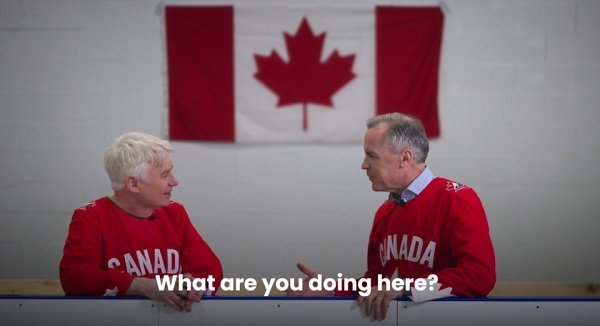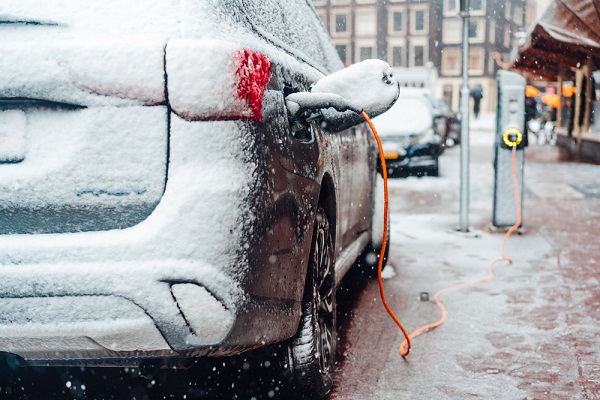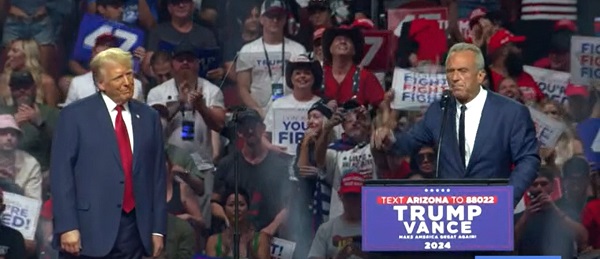Uncategorized
Migrants in southern Mexico set sights on town near Gulf
MATIAS ROMERO, Mexico — The main caravan of Central American migrants spent a rain-drenched night outside before continuing their slow walk through southern Mexico, on a path that is taking them toward the Gulf of Mexico and the U.S. border.
It remains unclear whether the caravan — the first of four that has formed — would make a turn east to Mexico City, or try to reach the nearest and most dangerous stretch of border, which lies almost directly north.
It also remained unclear how many would make it; 20 days of scorching heat, constant walking, chills, rain and illness had taken their toll. Mexico’s Interior Department said Thursday nearly 3,000 of the migrants have applied for refuge in Mexico and hundreds more have returned home. At its peak, the caravan had about 7,000 people.
Honduran migrant Saul Guzman, 48, spent the night under a tin roof in the Oaxaca state town of Matias Romero with his son Dannys, 12, before setting out for the town of Donaji, 30 miles (47
“I have been through a lot,” said Guzman. “I want to spend my time differently, not in poverty.”
The only thing he left behind in his hometown is a coffin, either for his mother, who suffers dementia, “or for me, if I don’t make it,” Guzman said.
The migrants had already made a grueling 40-mile (
Cesar Caraca, a 26-year-old migrant from Honduras, said he killed a poisonous coral snake in the brush near the site at the entrance to Matias Romero where they set up camp Thursday.
“This bites a child and kills him,” Caraca said. The meter-long snake coupled with complaints of bad smells and poor lighting led some migrants to move to an empty hotel that had been damaged by a 2017 earthquake.
The migrants have not said what route they intend to take northward or where on the U.S. border they plan to reach, but Veracruz would take them toward the Texas border. Another large caravan early this year passed through Veracruz but then veered back toward Mexico City and eventually tried to head to Tijuana in the far northwest. Few made it.
Immigration agents and police in Mexico are nibbling at the edges of two caravans currently making their way through southern Mexico.
While authorities haven’t directly targeted the main caravan of about 4,000 migrants, a second, smaller caravan about 200 miles behind the first group appeared to be more leaderless, get less press attention and be more vulnerable.
A federal official who was not authorized to be quoted by name said 153 migrants in the second caravan were detained Wednesday during highway inspections in the southern state of Chiapas, a short distance from the Guatemalan border. While the precise size of the second caravan is unclear, that could be equivalent to about 10
And there was also pressure on the first caravan. Not only did the hoped-for buses not arrive, but federal police began pulling freight trucks over and forcing migrants off, saying their habit of clinging to the tops or sides of the trucks was dangerous.
“Get off! Get off!” police officer Benjamin Grajeda shouted to a group of migrants clinging to the side of a truck outside Juchitan. “You can ride inside, but not on the outside.”
At other points along the route, police have forced overloaded pickups to disgorge migrants. On previous days, they have ordered passenger vans to stop transporting migrants.
But U.S. President Donald Trump ramped up his pre-election focus on the caravan and others behind it, talking of creating a U.S. military force on the border that would outnumber the migrants, many of them women and children.
“As far as the caravan is concerned, our military is out,” Trump said. “We have about 5,800. We’ll go up to anywhere between 10,000 and 15,000 military personnel on top of Border Patrol, ICE and everybody else at the border.”
A third band of about 500 from El Salvador made it to Guatemala, and a fourth group of about 700 set out from the Salvadoran capital Wednesday.
Similar caravans have occurred regularly over the years and passed largely unnoticed, but Trump has focused on the latest marchers seeking to make border security a hot-button issue in next week’s midterm elections.
__
Associated Press writer Peter Orsi in Mexico City contributed to this report.
Sonia Perez D., The Associated Press
Uncategorized
Cost of bureaucracy balloons 80 per cent in 10 years: Public Accounts

The cost of the bureaucracy increased by $6 billion last year, according to newly released numbers in Public Accounts disclosures. The Canadian Taxpayers Federation is calling on Prime Minister Mark Carney to immediately shrink the bureaucracy.
“The Public Accounts show the cost of the federal bureaucracy is out of control,” said Franco Terrazzano, CTF Federal Director. “Tinkering around the edges won’t cut it, Carney needs to take urgent action to shrink the bloated federal bureaucracy.”
The federal bureaucracy cost taxpayers $71.4 billion in 2024-25, according to the Public Accounts. The cost of the federal bureaucracy increased by $6 billion, or more than nine per cent, over the last year.
The federal bureaucracy cost taxpayers $39.6 billion in 2015-16, according to the Public Accounts. That means the cost of the federal bureaucracy increased 80 per cent over the last 10 years. The government added 99,000 extra bureaucrats between 2015-16 and 2024-25.
Half of Canadians say federal services have gotten worse since 2016, despite the massive increase in the federal bureaucracy, according to a Leger poll.
Not only has the size of the bureaucracy increased, the cost of consultants, contractors and outsourcing has increased as well. The government spent $23.1 billion on “professional and special services” last year, according to the Public Accounts. That’s an 11 per cent increase over the previous year. The government’s spending on professional and special services more than doubled since 2015-16.
“Taxpayers should not be paying way more for in-house government bureaucrats and way more for outside help,” Terrazzano said. “Mere promises to find minor savings in the federal bureaucracy won’t fix Canada’s finances.
“Taxpayers need Carney to take urgent action and significantly cut the number of bureaucrats now.”
Table: Cost of bureaucracy and professional and special services, Public Accounts
| Year | Bureaucracy | Professional and special services |
|
$71,369,677,000 |
$23,145,218,000 |
|
|
$65,326,643,000 |
$20,771,477,000 |
|
|
$56,467,851,000 |
$18,591,373,000 |
|
|
$60,676,243,000 |
$17,511,078,000 |
|
|
$52,984,272,000 |
$14,720,455,000 |
|
|
$46,349,166,000 |
$13,334,341,000 |
|
|
$46,131,628,000 |
$12,940,395,000 |
|
|
$45,262,821,000 |
$12,950,619,000 |
|
|
$38,909,594,000 |
$11,910,257,000 |
|
|
$39,616,656,000 |
$11,082,974,000 |
Uncategorized
Trump Admin Establishing Council To Make Buildings Beautiful Again


From the Daily Caller News Foundation
By Jason Hopkins
The Trump administration is creating a first-of-its-kind task force aimed at ushering in a new “Golden Age” of beautiful infrastructure across the U.S.
The Department of Transportation (DOT) will announce the establishment of the Beautifying Transportation Infrastructure Council (BTIC) on Thursday, the Daily Caller News Foundation exclusively learned. The BTIC seeks to advise Transportation Secretary Sean Duffy on design and policy ideas for key infrastructure projects, including highways, bridges and transit hubs.
“What happened to our country’s proud tradition of building great, big, beautiful things?” Duffy said in a statement shared with the DCNF. “It’s time the design for America’s latest infrastructure projects reflects our nation’s strength, pride, and promise.”
“We’re engaging the best and brightest minds in architectural design and engineering to make beautiful structures that move you and bring about a new Golden Age of Transportation,” Duffy continued.
Mini scoop – here is the DOT’s rollout of its Beautifying Transportation Infrastructure Council, which will be tasked with making our buildings beautiful again. pic.twitter.com/
9iV2xSxdJM — Jason Hopkins (@jasonhopkinsdc) October 23, 2025
The DOT is encouraging nominations of the country’s best architects, urban planners, artists and others to serve on the council, according to the department. While ensuring that efficiency and safety remain a top priority, the BTIC will provide guidance on projects that “enhance” public areas and develop aesthetic performance metrics.
The new council aligns with an executive order signed by President Donald Trump in August 2025 regarding infrastructure. The “Making Federal Architecture Beautiful Again” order calls for federal public buildings in the country to “respect regional architectural heritage” and aims to prevent federal construction projects from using modernist and brutalist architecture styles, instead returning to a classical style.
“The Founders, in line with great societies before them, attached great importance to Federal civic architecture,” Trump’s order stated. “They wanted America’s public buildings to inspire the American people and encourage civic virtue.”
“President George Washington and Secretary of State Thomas Jefferson consciously modeled the most important buildings in Washington, D.C., on the classical architecture of ancient Athens and Rome,” the order continued. “Because of their proven ability to meet these requirements, classical and traditional architecture are preferred modes of architectural design.”
The DOT invested millions in major infrastructure projects since Trump’s return to the White House. Duffy announced in August a $43 million transformation initiative of the New York Penn Station in New York City and in September unveiledmajor progress in the rehabilitation and modernization of Washington Union Station in Washington, D.C.
The BTIC will comprise up to 11 members who will serve two-year terms, with the chance to be reappointed, according to the DOT. The task force will meet biannually. The deadline for nominations will end Nov. 21.
-

 National1 day ago
National1 day agoCanada’s free speech record is cracking under pressure
-

 Digital ID1 day ago
Digital ID1 day agoCanada considers creating national ID system using digital passports for domestic use
-

 Business1 day ago
Business1 day agoAlbertans give most on average but Canadian generosity hits lowest point in 20 years
-

 Fraser Institute1 day ago
Fraser Institute1 day agoClaims about ‘unmarked graves’ don’t withstand scrutiny
-

 Business1 day ago
Business1 day agoTaxpayers Federation calls on politicians to reject funding for new Ottawa Senators arena
-

 Bruce Dowbiggin1 day ago
Bruce Dowbiggin1 day agoCarney Hears A Who: Here Comes The Grinch
-

 International1 day ago
International1 day ago100 Catholic schoolchildren rescued, Nigeria promises release of remaining hostages
-

 Alberta1 day ago
Alberta1 day agoHere’s why city hall should save ‘blanket rezoning’ in Calgary










